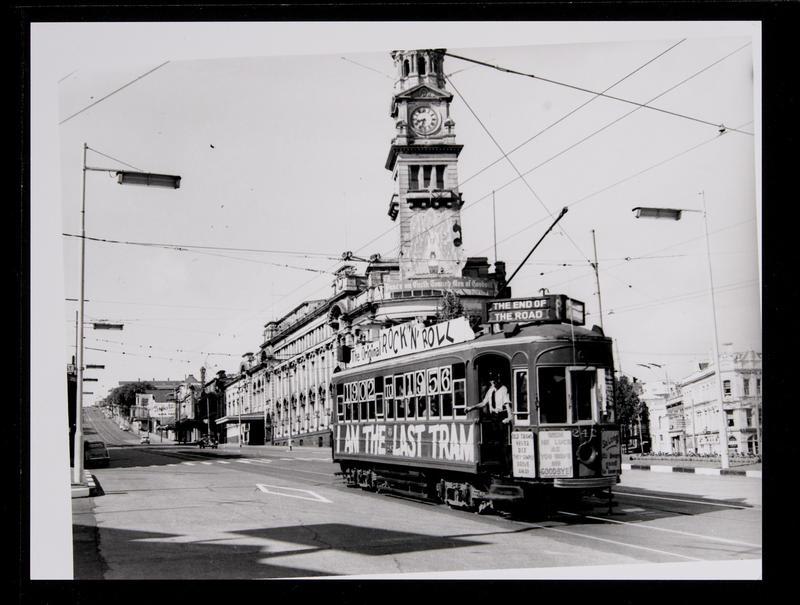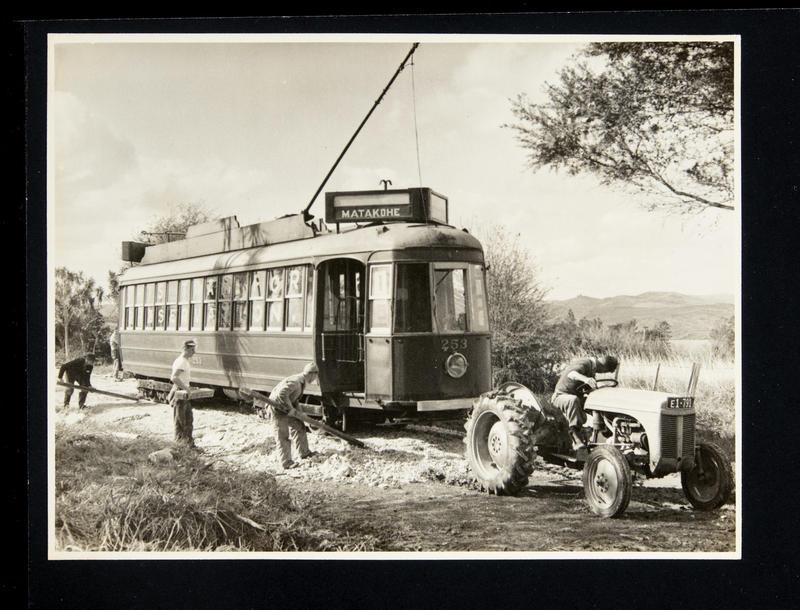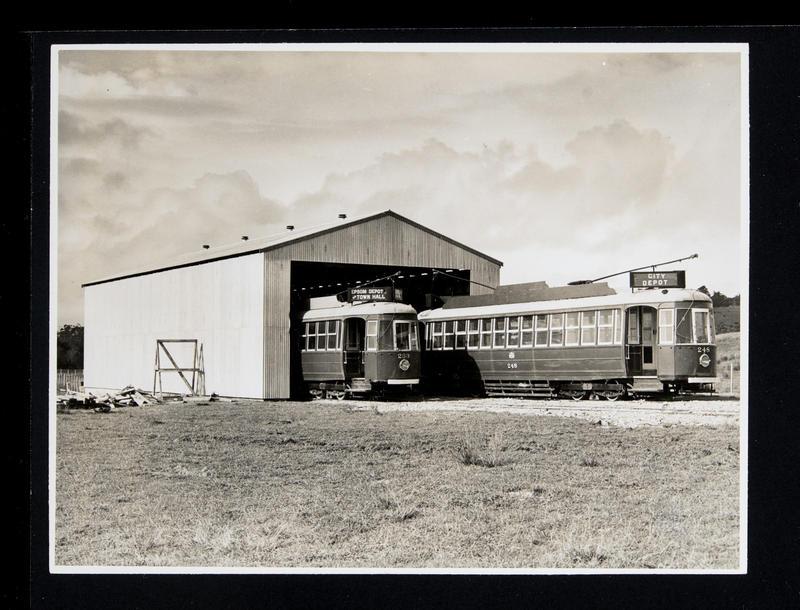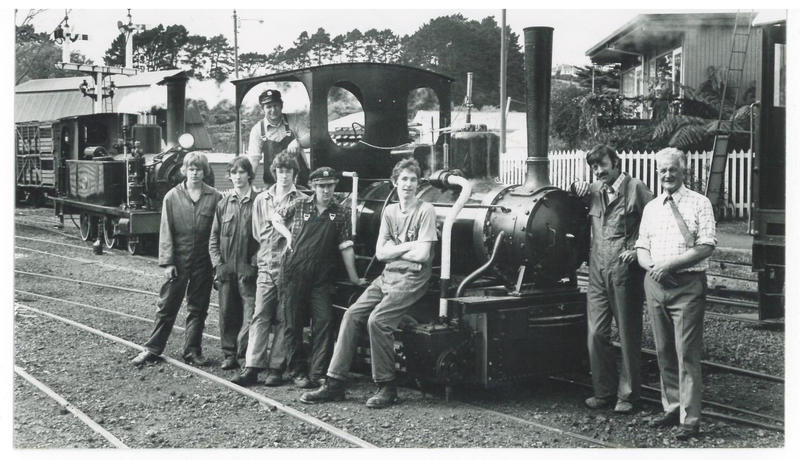Our Origin Story: From The Old Time Transport Preservation League to MOTAT

MOTAT is an Auckland landmark. Can you imagine Tāmaki Makaurau without the
trams rumbling down the tracks of Western Springs Park? The school trips to the Heritage Village? The early LIVE Days when plane engines were started, and cars revved to cheers of adoring crowds? Visitors who flocked to the Museum to admire the transport and technology collected there?
MOTAT was not always destined to be in Auckland; for a time it was located in the rural countryside, in the small town of Matakohe. So how exactly was MOTAT established, and why did it move to its current position in Te Wai Ōrea, Western Springs?

During the Second World War, Auckland’s tramway system, the largest in the country, had suffered terribly with heavy loads and minimal maintenance on both the tracks and the tram fleet. The Auckland Transport Board (ATB) cast worried eyes to the future and resolved to replace Auckland’s run-down tramway system with a fleet of British-built trolleybuses, augmented by petrol and diesel buses.
By late 1956, only one tram route was still running – the Onehunga line. Graham Stewart, a keen photographer and tram enthusiast, approached the ATB urging them to save at least one of the more modern, locally built trams for future generations rather than sell them off as scrap metal. It was this interest that would later see the ATB present 24-year-old Graham with the ‘Queen Mary’, tram No.253 after failing to find any other organisation or group to care for her.
Recently married and without a penny to his name, young Graham Stewart was now the proud owner of a 15-ton tramcar. The only problem was, where on earth was he going to store it?
Mulling over this dilemma with his wife Dawn Sterling’s family in Matakohe, a solution was found. Dawn’s cousin Merv Sterling had a small plot of land available for use and shared in Graham's vision of restoring the tram to its former glory. With this vision in mind, Merv and Graham formed “The Old Time Transport Preservation League” with some tramway friends.
Preparation was made to build a home for the Queen Mary on Merv’s land in Matakohe and in late May the tram travelled by low-loader trailer all the way up north to her new home.

A short length of track was laid for the tram to sit on, and today this site is now home to the famous Kauri Museum, founded by the Sterling family.

In early June 1957, the ATB invited The Old Time Transport Preservation League to be on-hand at the Epsom Tram Depot, to witness the running of the last three trams from Epsom to the workshops for stripping and disposal. At the end of this sad group of three trams was Streamliner No.248, a sister to the Queen Mary No.253.
It was here that Merv Sterling’s uncle, Richard Sterling, mentioned that he had been tram No.248’s first Motorman when it was new in 1938. Wanting to preserve this special piece of family history, Merv negotiated with the ATB to purchase the tram at scrap value. While originally intended to be converted into a playhouse for his children, Graham quietly convinced Merv otherwise, and the lucky No.248 departed to join the Queen Mary in Matakohe.
Over the next two years, The Old Time Transport Preservation League acquired three trams from Wellington, plus a host of other items of transport and technology before being donated a beautiful 1891 steam tram engine from Whanganui.
Watch this video to learn more about how a dinner of fish and chips led to the chance acquisition of steam tram 100:
The League was later donated a small industrial locomotive ‘Bertha’, a Tiger Moth aircraft, and several horse-drawn vehicles. However, the league was quickly running out of both space and the finances to continue building the museum on its current site in Matakohe. It needed to be moved to a city with a larger space and population.

But which city? For a time, it was thought Whangārei would be the final home of the museum; however, a split vote saw the Whangārei Borough Council decline the proposal, stating they didn’t feel they could do the museum justice.
Now urgent action was required, the league was fast running out of finances and prized exhibits still needed to be collected throughout the country or risk being sold as scrap to Japan.
This is where a Mr Frank Simpson stepped up. It was due to Simpson's efforts that the Aeronautical Society, and Historic Auckland Society agreed to come together with The Old Time Transport Preservation League to campaign for a combined New Zealand Transport, Aeronautical, and Technology Museum. A proposal was prepared, and a meeting was held in the Auckland City Council Chambers — 27 organisations indicated their advance support and willingness to take part in the new museum.
Following this successful meeting, Auckland Council and the Public Relations Office agreed to lease the land in Te Wai Ōrea, Western Springs for the establishment of the new museum.
On this unused site sat a large pumphouse building and rare steam-driven Beam Engine that once pumped the water from Western Springs Lake up to the Ponsonby Reservoir, providing Auckland with its first drinkable water supply. Although the boilers had been removed, the Beam Engine was still complete and in situ, with the old Engineer’s Cottage close by.
These historic buildings and feats of engineering would be attractive centerpieces for the new Museum of Transport and Technology and in March 1964 MOTAT opened its doors to the public for the first time. Still very much, however, a museum in the making.

Later in 1964, the Wellington trams chosen by the League were rail-freighted to Auckland and once they were safely on-site at MOTAT, The Old Time Transport Preservation League wound up its affairs. This in many ways marked the end of the League and the beginning of MOTAT as we know it today.
Information for this piece was sourced from ‘The Museum Makers’ a book by Harold Stone and
from the ever-knowledgeable James Duncan.
READ MORE: "Our History"
VIEW: Graham Stewart's Photos in MOTAT Collection
MOTAT SHOP: Trams Still Around New Zealand by Graham Stewart
Part Two: MOTAT's Early Years - coming soon.
Cite this article:
Van Well, Saskia. Duncan, James, 2022. Our Origin Story: From The Old Time Transport Preservation League to MOTAT. MOTAT Museum of Transport and Technology. Published: 24 March 2022. URL: https://www.motat.nz/collections-and-stories/motat-origin-stories-from-old-time-transport-preservation-league-to-motat